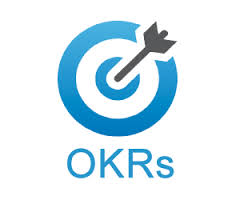A lot has been said and written about the roles & responsibilities of product managers but not much is discussed about the role of leading a team of product management professionals.
In this article I’d like to share some thoughts around the key responsibilities of a product management leadership role — it could be a Head, Director, or VP depending on the size and structure of your company.
In addition to the usual suspects such as product vision & strategy, I feel a product leader’s key responsibility is to build product managers. Building a great product management team requires best-in-class processes for setting goals and achieving them.
Most of us would have come across Management By Objectives (MBOs), invented by Peter Drucker in the 1950’s.
Some of us (read millennial) will be familiar with the concept of Objectives & Key Results (OKRs), a popular goal setting mechanism used by Google.

OKRs stand for Objectives & Key Results — a lot of information is available on the Internet, but some of its fundamentals are the following:
- OKRs is a business success enablement tool and helps align individual efforts with company vision, business direction, and product priorities.
- OKRs are individual goals to move the business forward.
- OKRs are dated and scoped to a specific time period, usually quarterly.
- Objectives are bold and ambitious goals that contribute to business & product success and push you to rethink the way you need to work at peak performance. Ambitiousness of the goals should take you out of our comfort zone.
- Key Results are well defined concrete deliverables with objectively measurable metrics to gauge achievement of the goal.
- OKRs is not a laundry list of everything you do, it’s a representation of your top priorities.
- The motivators that started projects in the first place have to be achieved. Instead of tracking delivery of projects and tasks, you should measure the indicators that motivated them in the first place.
Now on to Management by OKRs (MOKRs) — after much thought, I have realized that OKRs is a powerful tool for leading a team of product professionals, hence the term Management-by-OKRs.

Product leaders could use OKRs as the key mechanism to drive their product and project teams to greatness.
And this simplifies the core responsibilities of a product leadership professional into three levels:
- Primary focus will be on the vision, strategy, and company level OKRs
- Then, focus on the product team’s OKRs. Lead team in setting OKRs and achieving success in them.
- After that, think about chores (routine and mundane tasks)
This way almost everyone is focused on things that matter the most to the company and product success.
Would love your thoughts on MOKRs!





